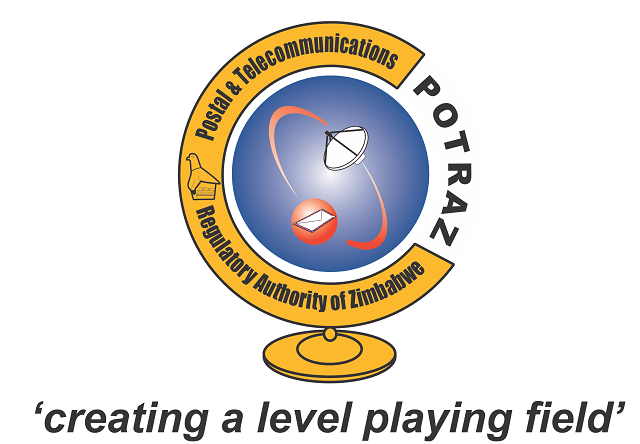AMR study reveals shocking misuse of anti-biotics in Zim

Sifelani Tsiko
A situational analysis report by the Zimbabwe Anti-Microbial Resistance Core Group has revealed shocking abuse of antibiotics in a worrying trend that could see more people in the southern African country dying from such ailments as cuts and grazes, diarrhoea and flu as antibiotics lose their power to fight minor infections.
AMR country coordinator, Dr Sekesai Zinyowera told a public lecture on Anti-Microbial Resistance recently at the University of Zimbabwe — Institute of Continuing Health (ICHE) that the sale of antibiotics without prescription in private pharmacies was rampant and posed serious public health risks.
She said private pharmacies and other illicit drug peddlers found on many street corners, flea markets and other settings in urban and rural areas had worsened the abuse of antibiotics.
“The situation in the country is very disturbing,” Dr Zinyowera said. “Unscrupulous dealers are peddling drugs while even some medical doctors are prescribing antibiotics for uncomplicated complaints such as a cough, runny nose or sore throat without fever.
“In other, worse situation, pharmacists are prescribing antibiotics without going through medical doctors’ report. There are so many loopholes in the country’s health sector that needs to be addressed as a matter of urgency.”
In primary health care centres and outpatient clinics, the microbiologist further pointed out, antibiotics are prescribed for similar complaints while in hospitals and particularly intensive care units (ICU), antibiotic stewardship programmes are often absent.
As a result, she said, anti-biotic use is high and preliminary findings from the situational analysis conducted by the AMR Core Group show that antibiotics are being used without proper feedback from microbiology labs.
“Doctors in our hospitals are increasingly finding that antibiotics no longer work against urinary and skin infections, tuberculosis and gonorrhoea,” Dr Zinyowera said.
“In Zimbabwe, there is widespread use of para-professionals. There is a lot of parallel structures that are used to prescribe and distribute antibiotics and these need to be minimised. It’s so easy to get antibiotics, it’s easy to prescribe and this is a huge problem.”
Health experts say overuse and abuse of antibiotics leads to Anti-microbial Resistance (AMR).
AMR, they say, is the phenomenon whereby microorganisms (bacteria, fungi, protozoans and viruses) display reduced sensitivity to antimicrobial drugs used to treat their respective infections.
They say the overuse and misuse of anti-microbial agents is accelerating this natural process, rapidly rendering modern treatments for infectious diseases partially or totally ineffective, resulting in increased or prolonged morbidity or mortality.
What this simply means is that more Zimbabweans can die from cuts and grazes, diarrhoea and flu as antibiotics lose their power to fight minor infections.
The AMR study also found out that many people who were prescribed with antibiotics were not finishing the full course and experts say if they stop mid-way the bacteria may become resistant.
“Without urgent, co-ordinated action among all key stakeholders in Zimbabwe, we are headed for a disaster,” said Dr Robert-Gray Choto of the UZ medical school.
“The risks are real and common infections and minor injuries which have been treatable for decades will once again kill many people. We risk losing the benefits that have come with effective antibiotics.
“Unless we take significant actions to improve efforts to prevent infections, and also change how we produce, prescribe and use antibiotics, we risk losing many people. Zimbabwe needs to move with speed to draft a national action plan for AMR.”
Antimicrobial resistance (AMR), endangers health systems capacity to treat bacterial, viral, fungal or parasitic infections, as the latter have become resistant to drugs, according to the World Health Organisation (WHO).
The country situational analysis revealed that there has been a few researches that have been carried out in Zimbabwe which have revealed the presence of resistant microbials.
The survey for 101 Medical Doctors indicated that 78 percent worked in urban areas, 56.1 percent have had cases of AMR, 91,8 percent prescribed antibiotics empirically.
Out of the 102 pharmacy respondents, 87 percent worked in urban areas, 59.4 percent agreed that antibiotic resistance is a serious problem in Zimbabwe, 50 percent agreed that they sometimes prescribed antibiotics themselves, and that the most common antibiotics that they sold without a prescription were amoxicillin, cotrimoxazole and ciprofloxacin.
For veterinary doctors, the study showed that unqualified Veterinary Medicines General Dealers were the ones that dispense medicines to farmers.
WHO experts are particularly concerned about bacteria responsible for pneumonia, urinary tract infections, skin infections, diarrhoea and gonorrhoea.
They are also worried that antiviral medicines are becoming increasingly less effective against flu.
Dr Zinyowera and her team, found out that in Zimbabwe, 70 percent of Clostridium difficile isolated from diarrhoeic stools was found to be resistant to cotrimoxazole, Salmonella typhii isolated during an outbreak were resistant to ciprofloxacilin, Neisseria gonorrhea has been found to be resistant to fluoroquinolines.
Experts say major causes of AMR in Africa include the HIV/AIDS epidemic where there is cotrimoxazole prophylaxis, inappropriate use, poor water and sanitation and hygiene, lack of proper diagnosis and poor nutrition.
Medicines Control Authority of Zimbabwe (MCAZ) head of evaluation and registration Dr William Wekwete told Zimpapers Syndication that the difficult economic situation has worsened the peddling of illegal drugs in flea marketers and other popular markets such as Mbare/Musika.
“The deteriorating economic situation has worsened the problem,” he said. “Fake anti-biotics are being sold in flea markets and on street corners. We have tried to provide information to the public, to conduct raids and despite all this, illegal trading still goes on.
“We need more resources to fight this scourge and to enable us to build strong mechanisms to fight illegal trade in fake anti-biotics.”
At the 68th World Health Assembly in May 2015, there was the adoption of the Global Action Plan on AMR and countries were urged to have in place national action plans.
Countries were first urged to undertake “country situation analysis” in order to determine the extent to which effective practices and structures to address antimicrobial resistance have been put in place and where gaps remain.
After the survey, countries then move to focus on the building blocks that are considered prerequisites to combat antimicrobial resistance: a comprehensive national plan, laboratory capacity to undertake surveillance for resistant micro-organisms, access to safe, effective antimicrobial medicines, control of the misuse of these medicines, awareness and understanding among the general public and effective infection prevention and control programmes.
“Zimbabwe has conducted its own situational analysis and what we now need to do is to convene a national stakeholder consultative meeting to fine-tune our AMR Draft for Zimbabwe’s National Action Plan for AMR,” said Dr Zinyowera.
“It (AMR) has now become a global issue and we expect to submit our national action plan to the WHO by February 2017. We need to join other countries in the fight against this global problem.”
UZ microbiologist Prof Lovemore Gwanzura said more funding is needed to enable researchers to carry out surveillance at all private and public health institutions to determine the extent of the AMR problem in the country. “This is a real threat to humanity and we need more funding to tackle the AMR issue in Zimbabwe.”
He said there was need to also promote appropriate antibiotic prescribing, education and engagement with both public, private and international organisation to address the AMR problem.
WHO says antimicrobial resistance (AMR) has become an urgent global health threat requiring immediate international and national attention.
It is estimated that 700 000 people currently die from AMR related deaths and that by 2050, if not tackled, resistance to antimicrobials could cause more than 10 million deaths annually.
Most of these deaths are expected to be in developing countries in Africa and Asia.
Experts say in the African health care sector, limited economic and human resources, an absence of the laboratory equipment and diagnostic tools necessary to empirically determine appropriate treatment regimens, high rates of hospital acquired infections, and inadequate regulation of antimicrobial agents requiring rigorous stewardship programmes, all impact the African continent’s capacity to control the spread of resistance.
These factors of vulnerability are further compounded by widespread socio-economic challenges and a uniquely high burden of infectious diseases.
The issue of AMR, health experts say, directly intersects not only with bacterial threats such as tuberculosis, but also other major pathogen threats of particular concern to Africa, namely HIV/Aids and malaria.
Said Tapiwanashe Kujinga, a lawyer and Pan African Treatment Access Movement activist: “It’s (AMR) another HIV and the threat level is much higher than HIV.
“For HIV the roots of infection are few whereas for AMR, the roots are many. You will only found out that you have resistance in your body when you are sick.” — Zimpapers Syndication











Comments